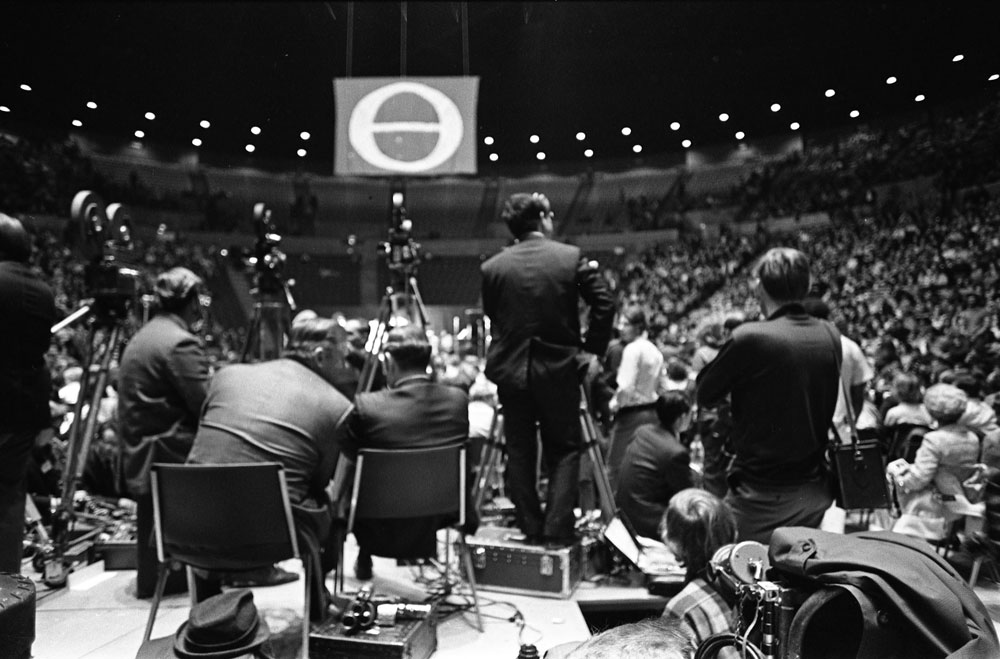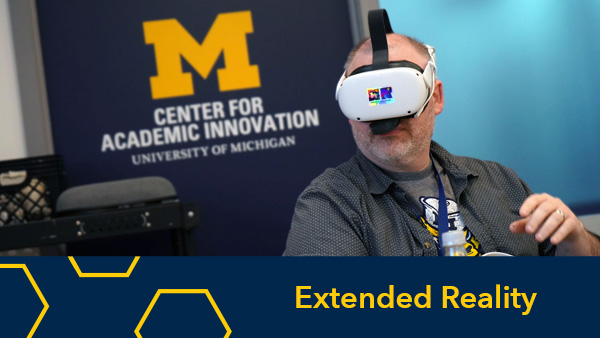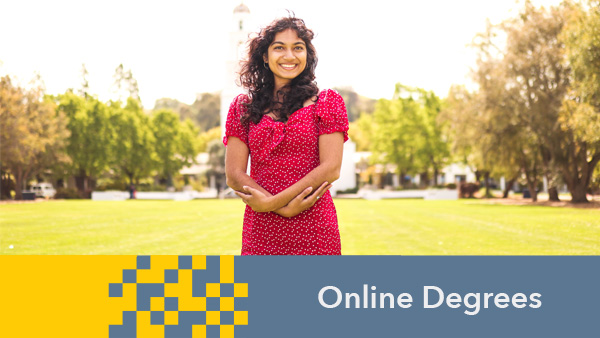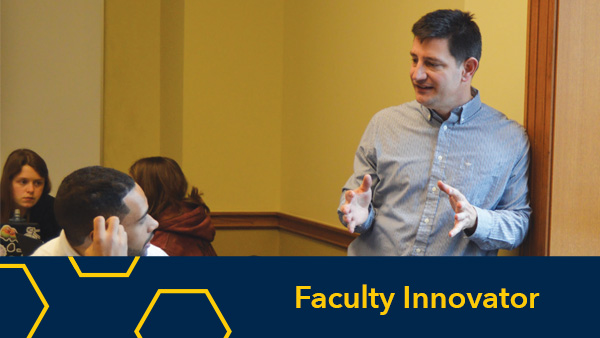
Benjamin Morse, Teach-Out Design Manager
“It is a beautiful thing to communicate for the same cause and from different countries of the world, I hope that there will be serious and sincere work to provide what we can for future generations of stability and safety in the future life,” one learner said from the Earth Day at 50 Teach-Out in April, 2020.
While 2020 has been a difficult year for many around the world, it may offer our global society a vital opportunity to evaluate and redesign the status quo and build a future that affirms and advances our commitments to becoming a more just and inclusive society. Between the layers of crisis, whether it’s COVID-19, police brutality and systematic racism, or climate change, there is an emerging collective reckoning with a bias toward rapid change and action. It is indeed a “beautiful thing” to connect with others from across the world to learn about, discuss, and take action on our world’s most pressing societal issues.
When I began writing this post, enrollment across all 34 Teach-Outs eclipsed 100,000 global learners since the first launched in March 2017. In the past couple of weeks since beginning this story, that number has already increased to more than 110,000 learners, enough to fill Michigan Stadium and then some. We’ve reached learners from every country in the world, launched across four platforms ( Coursera, edX, FutureLearn, and Instagram), and featured almost 400 academic and non-academic experts. Surpassing the 100,000 learner milestone gives us hope for the future, and as our opening remark from a Teach-Out learner pointed out, a venue to communicate for the same cause and connect with people from all walks of life. Ultimately everything we create as part of this model is for our learners who join these conversations from all over the world. Have a look:
Over the past couple of years, I’ve been heartened by the genuine connections, conversations, and actions that serve as the basis of the Teach-Out learning community. These touchpoints connect academic scholars with engaged global citizens, they foster relationships between academic and non-academic expertise in a way that sparks innovation and empowers learners not only to take ownership of their understanding of issues but transform that knowledge into action. This is the essence of the Teach-Out model: conversation, dialogue, problem-solving, and taking concrete steps toward change (more at Teach-Out.org). In this current moment, we are hopeful Teach-Outs can continue to serve as one of our more effective tools in an evolving public engagement toolkit built for virtual interaction. It is a mission the Center for Academic Innovation is committed to.
Learn More | University of Michigan Teach-Outs
“We need spaces such as Teach-Outs now more than ever: spaces where lots of people with different perspectives and knowledge can gather, listen and learn from one another, and generate solutions together,” said Ellen Kuhn, public engagement specialist for the Center for Academic Innovation.
In order to generate these collective solutions, we need new modalities to connect. We need nuance and connection that are not possible from simply scanning social media or browsing the homepage of a news website.
“We need opportunities to explore and discuss issues beyond the headlines more than ever,” said Molly Maher, behavioral scientist for the center.
This approach has also resonated with our learners.
“Exciting. Teach-Out is a method of learning based on a new tradition of conversation, of coming together around society’s biggest issues by inviting everyone to connect in a new way beyond the university walls in a free, global online event that anyone could attend” said one learner who participated in the Sleep Deprivation Teach-Out.
Another learner, this time from the Earth Day at 50 Teach-Out, said, “I am very interested in this topic. No matter where you stand, we invite you to share your perspectives with others and to listen to them in return. Together we can work to understand the past, question the present, and prepare for the future.”
Yet another learner, from the Police Brutality in America Teach-Out, highlights that Teach-Outs leverage technology to succinctly share perspectives. “Thank you for the opportunity to hear U-M scholars and community practitioners with their thoughtful and accessible presentations and the wealth of relevant resources. Length of videos and readings made it possible to absorb the material without being overwhelmed and to complete the course while working full-time.”
These spaces are evolving along with the technology, and we’re grateful to have reached so many global learners by growing and adapting a new model for public engagement in the online learning environment.
Building on Public Engagement Models from the Past to Inspire the Future
The Teach-Out model was originally inspired by the Teach-Ins of the 1960s and 70s at the University of Michigan and across the country. Teach-Outs are designed to create an engaged online learning experience centered around pressing social issues. The Teach-In movement was born at U-M in March 1965 in protest of Lyndon Johnson’s escalation of U.S. involvement in the Vietnam War. Rather than staging a strike, U-M faculty, students and community members saw power in collective knowledge and sought to activate public concern and elevate public discourse around affecting change within complex social issues. Participants wanted to first understand the problem and sought out diverse perspectives to help, both academic and non-academic. They also wanted to collectively build knowledge by reevaluating how expertise is defined and how academic experts engage with the public. This approach quickly spread across the country to places like Columbia University and the University of California, Berkeley.
The power in collective knowledge remains, and digital technology allows that power to grow even more as more voices and learners come together in an online environment to discuss vital issues of the day. “I’ve been quarantining in my home for four months now – alone but yet together in this with millions of others – and trying to wrap my head around pandemics, police brutality, protests, and economic instability, and events that will have societal reverberations for years to come,” said Lauren Atkins Budde, director of open learning initiatives at the center. “Evolving the model of the Teach-In to the virtual structure of the Teach-Outs means that we can still build community with strangers on the other side of the world, still learn about and debate these pivotal issues, and still be safe. And I think we’re all looking for that – understanding, community, and a sense of control”

The Teach-Out model was developed to build on this history. With a bias towards action, the online model strives to create a virtual town hall where learners can discuss new ideas and suggest ways to remedy societal issues regardless of background or expertise. Grounded in several foundational learning theories and best practices in online learning, the Teach-Out model was developed to further connect learners and scholars within online learning environments and provide novel ways to promote engagement. The topics range widely but the learning experience stays consistent.
Our Vision for the Future
Teach-Outs bring a diverse group of people together like never before, and provides a global audience with access to academic and non-academic expertise on the most important issues of our time. And other institutions are starting to take notice. Just like the Teach-Ins, we are beginning to see the Teach-Outs spread to other institutions across the world. In 2018 and 2019, U-M offered two training seminars with a total of 15 institutions of higher education with the goal of sharing the Teach-Out conceptual framework, collaborating to improve upon the model, and scaling it to new institutions.
Since September 2018, six institutions — University of Notre Dame, Emory University, Davidson College, Leiden University, Johns Hopkins University, and Northwestern University — have created eight Teach-Outs or similar online learning events. We’re inspired by our colleagues who are changing the way their institutions fulfill their missions and connect the great work of their faculty and collaborators with a broader public.
“As we continue to expand the Teach-Out series my hope is that the participants reflect the diversity of the world around us and that through the effective exchange of ideas we will listen, learn, and act together in the interest of generating sustainable solutions for a healthy and just world.” — James DeVaney, Associate Vice Provost and Founding Executive Director, Center for Academic Innovation
“As our center looks for new ways to extend academic excellence, expand public purpose, and end educational privilege, we realize our vision by connecting scholars with engaged learners and citizens, removing any and all barriers to learning, and sharing what we learn with a growing nationwide network for academic innovation,” said James DeVaney, associate vice provost and founding executive director of the center. “Our Teach-Out Series is a perfect illustration of these principles at work. With this new model for agile curriculum design, we’ve motivated participants and partner institutions from across the globe to join us in a new compassionate public square where we seek to better understand and do something about the most pressing societal challenges of the day.
We’re grateful to have engaged with so many learners over the past three years, and we hope to build on these relationships and fully realize our potential in this medium. Atkins Budde’s vision encompass what she calls “small goals.”
“One hundred million learners, 10 million Teach-Outs, one million institutions launching Teach-Outs on their own. Real, productive and invigorating conversations. Individual and social change. You know, small goals.”
That vision might not be small, but expanding to new people, places and perspectives is key, said DeVaney. “As we continue to expand the Teach-Out series my hope is that the participants reflect the diversity of the world around us and that through the effective exchange of ideas we will listen, learn, and act together in the interest of generating sustainable solutions for a healthy and just world.”
Ellen Kuhn echoes this sentiment, “I hope that Teach-Outs continue to find innovative ways to foster discussions, connections, and actions related to important issues.” This idea makes me reflect on our past, with our history of the Teach-Ins and our future, which will require institutions to break with the status quo and move into new areas of public engagement in virtual environments that will further enable them to fulfill their evolving missions.
As more institutions adopt the Teach-Out model, more innovation will happen that can be adopted by U-M and beyond. “I hope that many other institutions begin their Teach-Out projects and have successes with them that we haven’t all yet imagined,” said Sean Patrick, media design and production team lead.
This movement needs diverse and creative leadership to carry forward the tenants of the model and our team is ready to learn and collaborate with others who are bold enough to expand on our collective experiences in this space. So we end by asking you, what will your Teach-Out topic be? What can we do to help you realize your path to furthering your mission and expanding impact within your unit or institution?
To learn more about the Teach-Outs, visit Teach-Out.org and enroll in our newest Teach-Out, visit Michigan Online. To contact our team, please send an email to [email protected].


